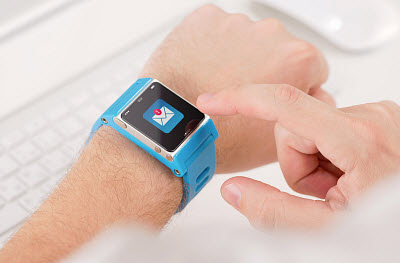Some predictions are starting to suggest that wearables are going to start disappearing next year.
Venture capital partner, Rick Yang, from New Enterprise Associates has released a prediction that the year ahead will be a critical one in wearable technology in which many of the devices we currently see on the market will be dying off forever.
Yang spoke specifically of the first generation devices that laid a foundation but that are rapidly being replaced.
According to the prediction from Yang, first generation wearable technology devices such as Google Glass, the Apple Watch and even the original Fitbit and Jawbone fitness trackers were vital to opening up the door to a spectrum of new and far more fashionable gadgets. He explained that “What that means is the wearable that integrates very directly into your everyday life, into your existing fashion sense to the extent that nobody knows you’re wearing a wearable.”
Yang added that the later generations of wearable technology feel more like an accessory than tech.
 He said that with the maturity of the market, luxury brands are going to start coming out with their own versions of smartwatches like the Apple Watch. This is already being seen in some important announcements of partnerships between luxury watchmakers and design houses that are working with tech giants to come out with appealing fashion accessories that have the features expected from wearables.
He said that with the maturity of the market, luxury brands are going to start coming out with their own versions of smartwatches like the Apple Watch. This is already being seen in some important announcements of partnerships between luxury watchmakers and design houses that are working with tech giants to come out with appealing fashion accessories that have the features expected from wearables.
Yang said that “At the premium end of the spectrum, it’s something like a Tag Heuer, right? It looks like a Tag, but it provides much more functionality than a Tag.” He also pointed to Athos, the startup supported by venture capital, which develops and manufactures workout clothes with embedded sensors for smart features. These smart clothes track heart and respiration rate, muscle groups and other health and performance issues.
To Yang, the most important feature of wearable technology in the future will be that it will function without feeling like a device is actually being worn. That way, a user can continue with his or her regular routines without having to think about whether or not gadgets are involved.
PayPal survey shows that retailers are beginning to focus more heavily on young consumers
Retailers are likely to focus more on young consumers in the coming years as mobile commerce becomes more prevalent. A recent survey from PayPal found that some 59% of smartphone shoppers are between the ages of 18 and 34. These consumers are also more likely to conduct their mobile shopping through an application rather than a mobile website. Apps are seen as more convenient by many consumers and they offer a better shopping experience.
Consumers have strong interested in NFC technology
The survey from PayPal found that 47% of consumers prefer to shop through apps rather than mobile browsers. Notably, those preferring to shop with their smartphones noted that the feature they are most interested in seeing in the future is the ability to tap a phone to a payment terminal to make a purchase. This may be good news for companies that are investing in NFC technology, which is used in the mobile commerce space to transmit digital information over short distances.
China is leading the way when it comes to mobile shopping
 PayPal’s survey found that China is home to the largest mobile shopping population. Approximately 68% of Chinese consumers shop online, either from a mobile device or a computer. The United Arab Emirates and Turkey follow behind China, with healthy online shopping activity. The most commonly purchased product purchased by China’s mobile shoppers were leisure products. In the United States, consumers used their mobile devices to purchase food and drink more than any other product category.
PayPal’s survey found that China is home to the largest mobile shopping population. Approximately 68% of Chinese consumers shop online, either from a mobile device or a computer. The United Arab Emirates and Turkey follow behind China, with healthy online shopping activity. The most commonly purchased product purchased by China’s mobile shoppers were leisure products. In the United States, consumers used their mobile devices to purchase food and drink more than any other product category.
Retailers are beginning to focus more on apps rather than mobile websites
While consumers reported that mobile-friendly websites would encourage them to shop more frequently, they still prefer applications. Apps are often seen as more secure and capable of meeting the needs of consumers. Retailers have been working to improve their mobile websites, but a growing number of these companies have begun relying on apps in order to effectively engage consumers. Some retailers are also beginning to develop their own mobile commerce apps, hoping to secure a new generation of mobile shoppers.
 He said that with the maturity of the market, luxury brands are going to start coming out with their own versions of smartwatches like the Apple Watch. This is already being seen in some important announcements of partnerships between luxury watchmakers and design houses that are working with tech giants to come out with appealing fashion accessories that have the features expected from wearables.
He said that with the maturity of the market, luxury brands are going to start coming out with their own versions of smartwatches like the Apple Watch. This is already being seen in some important announcements of partnerships between luxury watchmakers and design houses that are working with tech giants to come out with appealing fashion accessories that have the features expected from wearables.
 PayPal’s survey found that China is home to the largest mobile shopping population. Approximately 68% of Chinese consumers shop online, either from a mobile device or a computer. The United Arab Emirates and Turkey follow behind China, with healthy online shopping activity. The most commonly purchased product purchased by China’s mobile shoppers were leisure products. In the United States, consumers used their
PayPal’s survey found that China is home to the largest mobile shopping population. Approximately 68% of Chinese consumers shop online, either from a mobile device or a computer. The United Arab Emirates and Turkey follow behind China, with healthy online shopping activity. The most commonly purchased product purchased by China’s mobile shoppers were leisure products. In the United States, consumers used their 